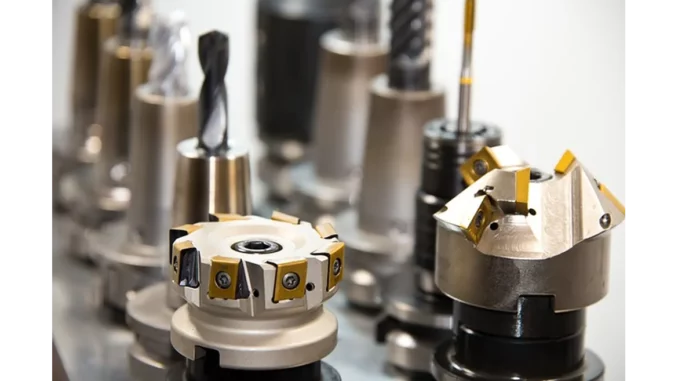
Summary
Smart Factories Transform Manufacturing with Advanced Connectivity
The manufacturing industry is witnessing a significant transition towards smart factories, leveraging advanced technologies to enhance efficiency, productivity, and innovation. Central to this evolution is the seamless integration of industrial communication platforms. Martin Hughes, an experienced industrial engineer, shares insights into the challenges and opportunities afforded by these developments, underscoring the importance of merging IT and OT systems. As this technological convergence unfolds, manufacturers are poised to redefine traditional processes and embrace a new era of industrial growth.
Main Article
The Intersection of IT and OT Systems
Martin Hughes, a prominent figure in global manufacturing, articulates the complexities of integrating Information Technology (IT) with Operational Technology (OT) systems. “The dichotomy between IT and OT presents a substantial challenge,” Hughes notes. IT systems typically manage data processing and business applications over extended periods, whereas OT systems are dedicated to the real-time operation of physical devices. “It’s akin to running a marathon with mismatched footwear,” he jokes, highlighting the inherent difficulty of aligning these divergent systems.
Yet, Hughes identifies the advent of Ethernet with Time-Sensitive Networking (TSN) as a revolutionary advancement. “TSN bridges the gap by accommodating the deterministic needs of OT alongside the data-driven demands of IT,” he states. This technology is proving instrumental in synchronising systems that traditionally operated in silos.
Harnessing the Potential of Emerging Technologies
The successful integration of IT and OT is essential for capitalising on technologies such as Artificial Intelligence (AI), big data analytics, and cloud computing. “In a smart factory, data is omnipresent,” Hughes explains. “From predictive maintenance to quality assurance, swift and precise data processing is transforming manufacturing operations.”
Hughes also outlines the transformative role of augmented reality (AR) in training and maintenance. “AR allows for more effective operator training and the remote execution of complex repairs,” he observes. Such innovations, once considered futuristic, are now being actively implemented.
Gigabit Bandwidth and Time-Sensitive Networking
The combination of gigabit bandwidth and TSN marks a pivotal progression in manufacturing technology. Hughes highlights that this enables a unified network capable of supporting both IT and OT systems with unprecedented reliability and precision. “It’s not merely about speed—it’s about creating a dependable and precise network infrastructure,” he affirms.
Real-time data aggregation and analysis are enhancing operational transparency. “Having a comprehensive, real-time view from sensor data to production metrics facilitates informed decision-making,” Hughes remarks. This capability effectively offers a dynamic dashboard reflecting the factory’s operational health.
The Industrial Internet of Things and Data Optimisation
Hughes further elaborates on the role of the Industrial Internet of Things (IIoT) in data optimisation. “IIoT devices function as the sensory network of the smart factory,” he states, “collecting extensive data, from machine performance to environmental conditions.” With robust network infrastructure, this data can be processed rapidly.
He also stresses the importance of edge computing in managing the data influx. “Processing data proximate to its source alleviates the burden on central systems,” he explains. This approach optimises bandwidth and ensures that only pertinent information reaches decision-makers.
Industry Collaboration and Standardisation
Looking ahead, Hughes emphasises the necessity of collaboration across the industry to unlock the full potential of smart factories. He underscores the pivotal role of standardisation in facilitating system and device interoperability. “Organisations like the CC-Link Partner Association are crucial in providing frameworks for confident system integration,” Hughes asserts.
Despite these advancements, challenges persist. “Security remains a major concern,” Hughes warns. Increased connectivity inevitably leads to increased vulnerabilities, necessitating robust security measures such as encryption and regular assessments. Furthermore, managing the sheer volume of data from IIoT devices demands sophisticated analytics tools and strategic approaches.
Empowering Small and Medium-Sized Enterprises
Encouragingly, Hughes highlights the impact on smaller manufacturers. “Unified networks’ scalability and cost-effectiveness lower the barriers for SMEs,” he comments. Smaller enterprises can now harness advanced technologies previously accessible only to larger manufacturers, thereby enhancing their competitiveness and agility.
In conclusion, Hughes envisions a connected manufacturing ecosystem where IT and OT integration through advanced communication networks fosters seamless collaboration between machines, systems, and humans. Driven by data and intelligent automation, the smart factory revolution promises a future where technological innovation and human creativity converge to propel the industry forward.
Detailed Analysis
The convergence of IT and OT systems in smart factories is reflective of broader economic shifts towards digitalisation and automation across industries. The integration facilitated by technologies like TSN is emblematic of the move towards more interconnected and data-driven operational models. This trend aligns with global manufacturing’s need to enhance competitiveness amidst increasing demand for customisation and rapid production cycles.
Furthermore, the emphasis on collaboration and standardisation underscores a collective industry effort to establish cohesive frameworks that enable seamless integration. This approach not only bolsters interoperability but also mitigates risks associated with adopting diverse technologies. Such standardisation is critical in ensuring that manufacturers, irrespective of size, can participate fully in this digital transformation.
Further Development
As the smart factory landscape continues to evolve, manufacturers are expected to increasingly adopt technologies that enhance connectivity and data utilisation. Future developments may focus on refining security protocols to address vulnerabilities inherent in increased connectivity. Additionally, further research into AI-driven analytics and edge computing will likely enhance data processing capabilities, enabling more nuanced and proactive decision-making.
Readers are encouraged to follow our ongoing coverage as we explore these developments and their implications for the global manufacturing sector. As the industry navigates this transformative journey, we will continue to provide insights into the innovations and strategies shaping the future of manufacturing.

